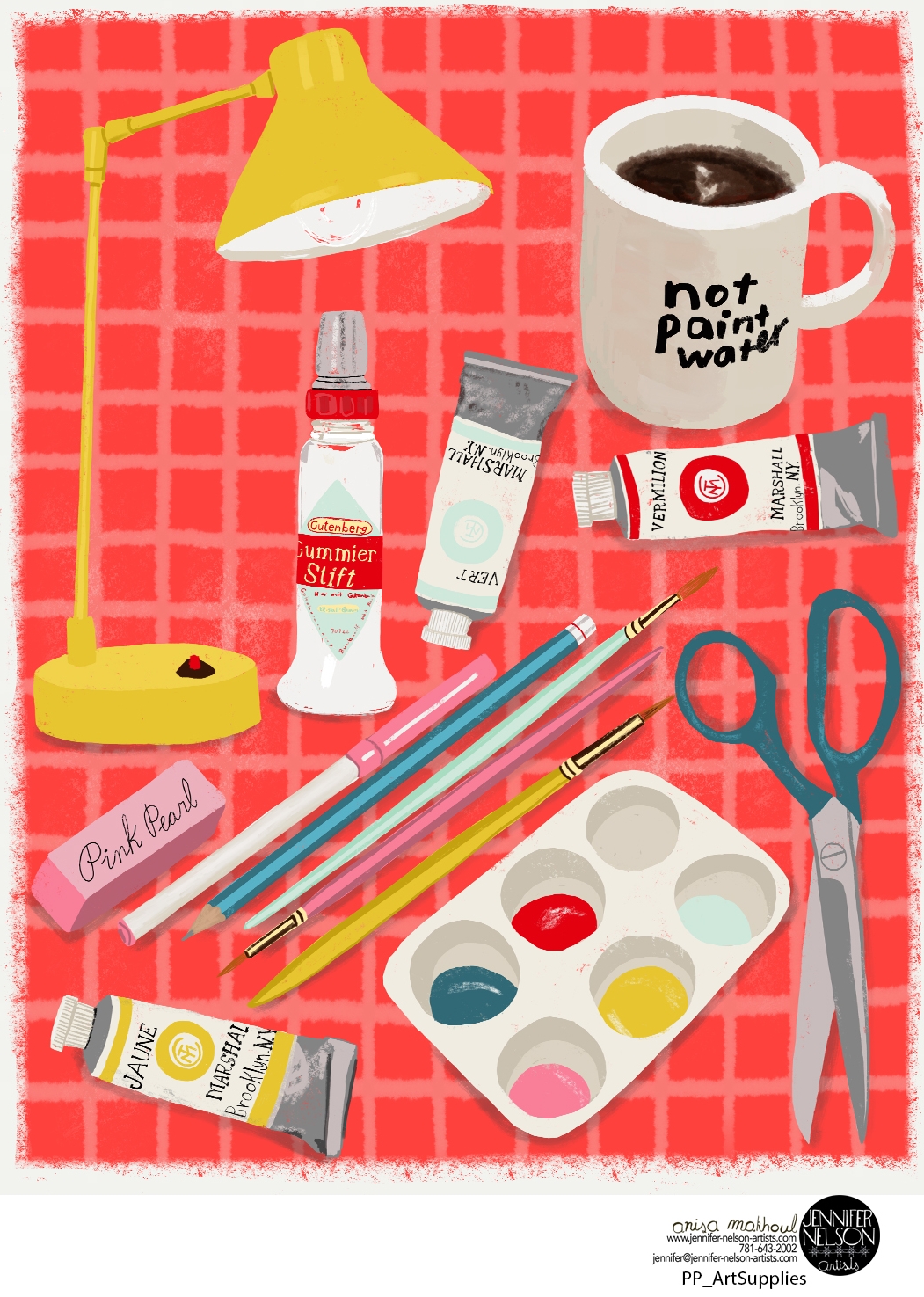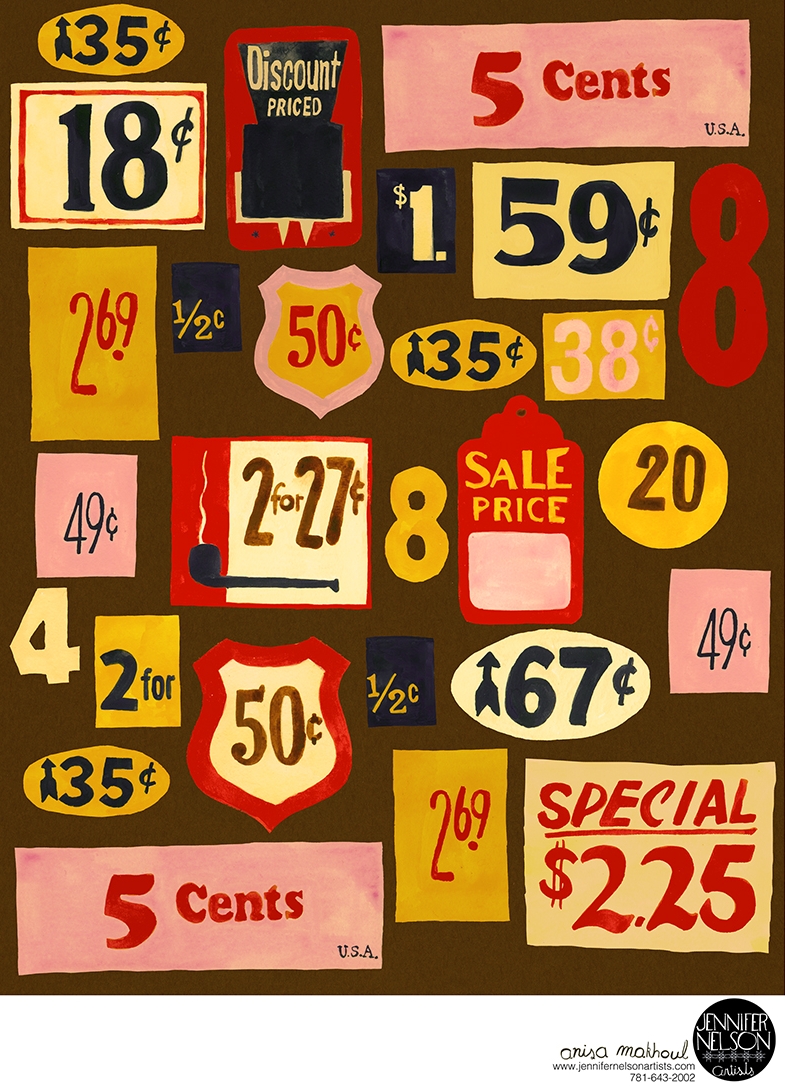Our own Anisa Makhoul answers your questions about creating art for surface design. We asked the artist to select three questions pertaining to her art career. These are her fascinating answers.
Q. If you hadn’t become a professional artist, what kind of career do you think you would have chosen?
A. If I couldn’t do anything artistic at all, I would have studied herbs/flora and religion. I’m very interested in folklore, folk magic, and African American folk spirituality. I dream of traveling to the Caribbean and studying under a root doctor. Maybe I’ll still do it one day.
Q. How old were you when you knew you wanted to be an artist? Did you strive to get your art on the refrigerator as a child? Describe your earliest artwork.
A. When I was really young I used to draw pictures with my crayons and then put prices in the corners, like 5 cents or so, based on how good I thought it was. I’d force my parents and grandparents to buy my drawings from me. I wasn’t just going to give them the art for the refrigerator.
Q. Did you have formal art training? Thinking back to art school, what’s something you learned in a classroom that you still use to this day?
A. I have a BA in fine art printmaking from Minneapolis College of Art & Design. I started out as a film and photo student and ended up graduating in hand printmaking. I never even considered illustration as a career. I thought I couldn’t draw because that’s what my drawing teacher told me. In fact, after I graduated from art school I was very sure that I had no place in the art world. After college I started sewing handmade dresses and doing fashion design. It took me 10 years to come back to art. Everything clicked when I began allowing myself to draw things in the wackiest, most relaxed way I could. I started enjoying drawing, and getting better at it.
Anisa's clients include: Vogue, Compendium Books, Anthropologie, Flow Magazine, Taproot Magazine, American Greetings, Trend Bible, Cost Plus World Market, TeNeus Publishing, TJ Maxx, Design House Greetings, Godiva, Hallmark, Harrods of London.











